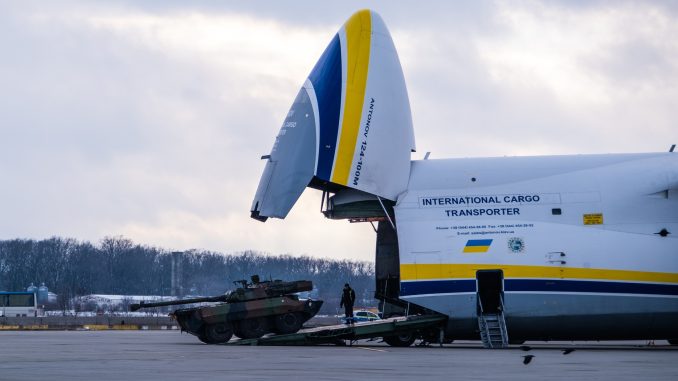
For the external observer, the Permanent Structured Cooperation (PESCO) is more equivalent to the long list of projects underway than to the 20 binding commitments, considered at the launch of this policy in 2017, as a before and after. At first glance, these 68 projects do not seem to pursue a single objective. Thus, it is worth asking, is the objective of PESCO clear even for those already initiated? In fact, it's not, and that remains the biggest obstacle to its success. At a time when a (second) strategic review of PESCO is being carried out, profound changes are required if it is to right its course.
The objective of PESCO?
La Council Decision 2017/2315 which established the Permanent Structured Defense Cooperation (PESCO) stated that "A long-term vision for PESCO could be to arrive at a coherent package of forces for the entire spectrum (a coherent full spectrum force package) of military operations - in complementarity with NATO, which will continue to be the cornerstone of collective defense for its members. "Could", not "should", so it was and is still more of an option than a decision. However, the binding criteria do point to the establishment of a package of forces. Furthermore, the Member States they undertook to equate their defense instruments, in particular by harmonizing the identification of military needs, addressing the most pressing (priority) common shortcomings and making units available to the EU that can be deployed wherever necessary, offering a strategic tool to the Union.
When PESCO was launched, Member States understandably renamed several existing or planned initiatives as PESCO projects, to demonstrate their progress. Unfortunately, this created a series of inertias from which PESCO has not been able to escape. Member States forgot about commitments and began to focus on a plethora of projects, often unrelated to the capabilities priorities set by both the Headline goal (HG) and the Capacity Development Plan (CDP). Many are not really projects, because they are presented without a schedule or budget, being rather exploratory studies, which may or may not lead to a real project. Most refer to equipment; very few to capabilities, that is, people, doctrine and equipment. Design, build and acquire equipment: that's what they are for the European Defense Fund (EDF) and other Commission initiatives. The objective of PESCO, however, should be to develop capabilities, that is, national or multinational units that use such equipment. Ultimately, most of the current projects would also have been carried out without it. What is PESCO for then?
PESCO is labor-intensive, but underutilized: many people spend long hours on just a fraction of what it is supposed to be. It is a mixed bag and, at the same time, a sideshow: almost anything can become a PESCO project (because everything fits into the more than broad "priorities" of the CDP); At the same time, the impact of PESCO on national defense planning is negligible. It will not disappear, because it is in the Treaty, but it will become increasingly irrelevant as time goes by unless the strategic review it is undergoing manages to address the underlying problems and re-emphasizes the original ambitious objective that it PESCO was pursuing.
An unprecedented strategic situation
The starting point of this review must be a shared understanding of the strategic environment and its concrete military implications. Are we really aware that the EU is facing an unprecedented situation?
For the first time in history, EU enlargement is being actively contested by a hostile power. One candidate country, Ukraine, is at war with Russia, and the EU and its member states actively support it as non-belligerents. In addition to this, Georgia and Moldova - also candidates to enter the EU - are very vulnerable to Russian aggression. If necessary, the Twenty-seven will have to do for these two countries what they are doing for Ukraine. In fact, there is a direct relationship between their situation and collective defense: the EU and Member States can confidently support the candidate countries without excessively fearing direct Russian retaliation, since NATO provides deterrence and defense. However, the change in US grand strategy and its shift towards the Indo-Pacific (already initiated by the Obama Administration) has a significant impact on the Alliance: in the event of simultaneous great power wars in Europe and Asia, it is likely that the The US gives priority to this last region. Therefore, within NATO, Europe increasingly has to guarantee its own conventional deterrence and defense, always under the American nuclear umbrella.
Meanwhile, Europe's southern flank remains as unstable as ever, with Russia also acting as a saboteur and multiplier of security threats. The EU is facing multiple crises, not only in the Sahel, but also in the Middle East and the Red Sea. New ones could also easily break out in these three regions, in North Africa, the Gulf and the Indian Ocean, but also in the Caucasus and the Black Sea (where the eastern and southern flanks are directly interconnected). In this sense, we must be aware that when European interests make intervention necessary, Europeans will have to act, because unlike what happened in other times, a North American intervention in the European periphery is increasingly unlikely. In relation to this, a credible expeditionary capacity will have a deterrent effect on Europe's neighbors and will reinforce European diplomacy and its weight as a global actor also in terms of security.
Finally, we must not forget that the threat of hybrid actions against the EU itself, carried out in the Gray Zone of the conflict spectrum. Actions that, by definition, will remain below the threshold that would activate Art. 5 / Art. 42.7. The EU lacks an integrated doctrine on how to respond to such actions and, in particular, how to deter them, which poses an additional problem.
A new package of forces
The new strategic situation demands a new posture of European forces. All troops from all European Allies / EU Member States added together They do not constitute a complete set of forces capable of acting throughout the entire spectrum of possible operations. Furthermore, in many essential areas European armies have little or no capacity; They are only fully operational if the United States makes up the difference. In view of the current North American strategy, this represents an unacceptable strategic risk. The solution is, within NATO, to align European contributions (including the UK) in such a way that they collectively form a coherent force package that is fully employable without the need for any US complement. NATO's New Force Model is already heading in this direction and includes the objective of having 300.000 European soldiers in a high state of readiness. European Allies should go a step further and commit to creating their own strategic enablers (strategic enablers) for this Force. To do this, they would have to agree on additional capacity objectives so that those 300.000 troops would not need more than a single American member: SACEUR. The result would be a tangible European pillar within NATO in military terms.
Europeans will also have to rebuild for themselves the logistical depth (in relation, for example, to the strength of supply chains, the production of military material or in terms of maintenance capacity) and the military mobility necessary to sustain this package of forces. As the Russo-Ukrainian war demonstrates, great additional depth is needed to support candidate countries that are being threatened or attacked. That support will probably be channeled through the EU and not NATO.
Furthermore, Europeans must take their expeditionary needs seriously. The Rapid Deployment Capacity (DRC) planned by the EU of up to 5.000 troops is clearly insufficient to deal with multiple crises. The Europeans need a much larger reserve of robust expeditionary forces (land, sea and air), equipped with their own enablers, to cope on their own with all possible scenarios in their large and unstable neighborhood. This has been clear from the beginning of the ESDP/CSDP, hence the Headline goal of 1999 spoke of an army corps to which the necessary naval and air assets would be added. However, from 2004 onwards the Member States began to think about replacing this objective with two battle groups battalion entity, conceived as a rapid response element. In this sense, although the DRC is a modular and interesting concept, it is little more than an idea on paper, as the Force would continue to consist of just a ground tactical group without the necessary enablers and complements.
In relation to the above, it is also worth remembering that one of the most conceptually promising PESCO projects, the EUFOR Crisis Response Operation Core (EUFOR CROC), was going in that same direction; It is expected to soon achieve its objectives, as well as the project's completion year, although it has not generated real capacity. As is the case in more general terms with the PESCO as a whole, in this case too there seems to be certain elements or inertias that cause the European Union to think small and not big.
A credible European expeditionary force requires nations to assign entire brigades (and air squadrons, and ships...) and train them as part of a community force package (within the global package of European forces) within the framework of periodic multinational maneuvers. A reserve scheme is not necessary, but, again, European facilitators. Only from this force package can a customized force be generated for specific operations. The EU could rethink the DRC along these lines, even knowing that NATO also contemplates a Response Force expeditionary ally. The important thing is that the European nations that can and want to organize themselves so that in the event of a crisis they can deploy flexibly under any flag without the need for non-European means.
Regarding deterrence and defense against hybrid actions: as long as the threshold of collective defense is not crossed, the first actor to react will be the EU itself, while mainly civil instruments will be used. However, military implications, such as cyber capabilities, must be determined and integrated into overall capabilities objectives, all of which urgently requires a global community doctrine.
The resulting European force package will not be owned by the EU or NATO, but will be made up of national capabilities. But nations can choose to cooperate to build such a package and use EU instruments to that end. This is precisely where PESCO comes into play.
A new beginning?
PESCO could be the central mechanism through which EU Member States wishing to cooperate to achieve capabilities objectives translate them into concrete initiatives and direct all defense cooperation within the EU framework, both within the of the CSDP and that of the Commission.
These objectives include those assigned to each NATO Ally through the NATO Defense Planning Process (NDPP)and, in particular, the additional objectives that NATO's European Allies collectively set for themselves to build a coherent force package within the Alliance; the objectives that imply the need to militarily support the EU candidate countries; and by the need for an autonomous European expeditionary capacity. The CDP's role would be to specify the last three, complementing the NDPP but not duplicating it. Together, these objectives constitute the PESCO framework: nothing outside of it should be able to carry the PESCO label.
Within this framework of objectives, Member States could then choose to: 1) collectively initiate research aimed at the development of new technologies; 2) design and build new systems; 3) acquire them. And they may choose either to foster multinational capabilities, permanently assigning national units (brigades, squadrons, ships) as part of broader formations (divisions, wings, fleets), or allowing a composite capability to operate as a single unit. by nationally owned platforms (drones, air transport, air defense, cyberspace, etc.).
There would no longer be a distinction between PESCO projects, European Defense Fund projects and dual-label projects. Instead, all relevant collective initiatives relevant to the goals would receive the PESCO label. Some would be implemented through the European Defense Fund and other instruments in the hands of the Commission or even through the European Defense Agency (for example, CAT B projects); in other cases, they would be carried out by groupings of Member States. In this way, no other European Defense Fund project outside of PESCO would be necessary. EU instruments and resources should focus on the single objective of building a coherent European package of forces.
This implies, however, that, in addition to the Member States, all relevant institutions are included in the PESCO Secretariat and obtain the right to propose projects: the EU General Staff, the European Defense Agency and the European Service of Foreign Action. The Commission should also be involved. This will ensure that Member States are forced to at least debate all the necessary projects, although in the end the capitals will be the ones who continue to decide whether or not to join any initiative. After all, experience has shown that a completely bottom-up process (bottom-up), based solely on the initiative of the Member States, does not spontaneously generate those initiatives necessary to solve all priority deficiencies. Furthermore, the PESCO Secretariat's recommendation on whether or not a project proposed by a Member State fits into PESCO should be binding. Member States could continue to undertake a rejected project, of course, but it could not benefit from EU funding or use the PESCO label, thus preventing it from remaining a mixed bag.
That said, PESCO would benefit greatly from the existence of a permanent presidency; A “Mr. o Mrs PESCO", former minister, leading the global effort to forge a coherent force package would have more impact than the figure of a "Defence Commissioner" dealing only with the industrial dimension of defence.
Conclusion
«Give PESCO a chance» was the motto chosen in 2017, given the skepticism towards the umpteenth EU defense initiative. A skepticism that once again proved justified, unfortunately, causing us to now find ourselves facing the last opportunity for PESCO. If Member States fail to reorient PESCO towards what they themselves consider most relevant for their defence, it will be marginalised.
Certainly, the most relevant thing today for EU Member States is not the Common Security and Defense Policy (CSDP), but deterrence and defense through NATO. Now, if the instruments that the EU enjoys can help the nations that form it to achieve their objectives also within the framework of NATO, why doubt it? They must do so and build on this idea to advance the objectives that would lead to a complete and coherent European force package. Twenty-five years after the start of CSDP, it is about time.
Editor's note: This article has been published first in English by EGMONT – The Royal Institute for International Relations under the title «PESCO: The Last Chance».
Authors Note: Sven Biscop was closely involved in the initial failed attempt to activate PESCO in 2009-10, and later came to doubt that activation would ever occur. His optimism, when it occurred in 2017, has since been seriously questioned given the results achieved by PESCO. However, none of the above prevents Beatriz Cózar Murillo from completing a doctoral thesis on PESCO under her supervision and that of Prof. Dr. Guillem Colom Piella.



Be the first to comment